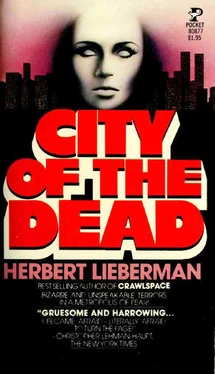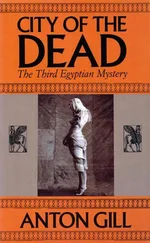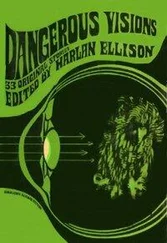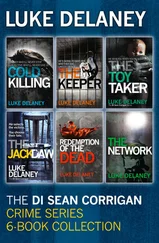“Konig.”
“Yes. Of course. Mr. Konig. Come right this way. We’ll make out the papers.”
Redding, on little maroon velvet pumps, scurries up to the front of the gallery, with Konig trailing a short distance behind.
Redding slips easily into the Mies chair behind the elegant little escritoire. “You have some identification, Mr. Konig?”
“Certainly.”
The gallery owner glances through driver’s license, registration, AMA card, jotting down details. “Ah, I see it’s not Mr. but Dr. Konig,” he says, by this time glowing with that kind of benevolence that only hard cash can engender in a merchant’s heart. “Very good, Doctor,” he says, handing back the identification. “I think you’ve chosen quite shrewdly. This girl’s work is going to be quite valuable some day. Funny, you know, only the other day, another gentleman was in here inquiring about her.”
“Another gentleman?” Konig’s eyes narrow to slits. “Who?”
“A very big collector from the Middle West. I’m not at liberty to divulge his name, you understand.”
“Yes, of course,” says Konig, his curiosity raging. “I don’t suppose you could tell me what he looked like?” Redding seems startled by the request, yet for Dr. Konig and his checkbook, he seems eager to comply. He laughs a little uneasily. “Well—he was a big man. Quite tall; white curly hair—”
As Redding drones on animatedly, it suddenly dawns on Konig that the big collector from the Middle West was obviously Frank Haggard, and that Mr. Anthony Redding is lying in his teeth.
“—and that’s why I say, Doctor,” he effuses, “you made a very sound investment today. Within the next few years Winslow’s work is going to be very much in demand. Big people are beginning to take notice. If you’d like, I can have those three gouaches sent up to you in Riverdale today.”
“No—I’ll take them with me.”
“But—”
“That’s all right,” Konig says emphatically. “They’re small.”
“Well”—Redding shrugs—“you’re the boss, Doctor.” He giggles a little foolishly. “If you can wait just a minute, I’ll have my boy pack them for you.”
Redding scurries to the back of the gallery where Konig can hear him calling down to someone on the floor beneath. In a few minutes he returns, face glowing unnaturally, and carrying a three-foot-by-four-foot package wrapped in brown paper.
“A fantastic coincidence, Doctor,” Redding bubbles excitedly. “I was just down in our storeroom. We had a shipment come in around two weeks ago. Most of the stuff is not even unwrapped yet, just sitting around down there waiting to be catalogued and inventoried. Anyway, look what I found right on the top of the heap.”
He thrusts the package at Konig. Large, black Crayola letters in the upper left-hand corner read: “Emily Winslow. 324 Varick Street. New York City.”
Suddenly Konig’s legs are trembling beneath him.
“Shall we open it, Doctor?”
“Yes,” says Konig, his mouth suddenly dry. “By all means.”
“I’m dying to see it myself.” Redding slashes the cords rather gleefully with an Exacto razor. Then the two of them are tussling with the wrappings. Beneath the coarse brown outer wrapping is a layer of newssheet lying directly over the canvas. They lift that in turn and then step back.
For a long moment Konig stands there gazing down at the canvas, not speaking, seeing only a flood of color and light—grays, greens, blues, dazzling ocher, and yellows. Then gradually a configuration of line and motion come together on the canvas, and suddenly Konig is aware of cold sweat erupting on his forehead. His legs buckle and he nearly sags.
“Marvelous,” Redding enthuses, unaware of Konig’s reaction beside him. “Isn’t it marvelous? Look at the gorgeous way she’s handled—”
Konig’s feverish eyes range avidly over the familiar lines of his house in Montauk. There it is, lovingly recreated. Every last detail of it—windows, balconies, decks, shrubbery, the dunes running out from the back of it. And there’s the high sand bluff on which it sits, the long sweep of empty beach below, and beyond that a gray-green slab of gently undulant surf, glinting with sunlight, unfolding like a scroll onto the beach below.
But it is not that, not simply that, that has caused his wrenched heart to slug so in his chest, beneath his shirt, like a huge mallet It is the face in the center of the canvas, the dear, beloved face of Ida Konig smiling out at him from beneath the huge brim of an old, floppy sun-bonnet. How well he knew that bonnet. It is still out there in Montauk, stored away somewhere in the attic in a stack of cartons that contain the rest of her things, hastily packed and stored away when she died. Her eyes smile warmly out at him. She is kneeling in the garden, her garden, with huge blood-red poppies nodding all about her. The poppies seem like living creatures, tall, slender, graceful things with fiery heads. They delight in her presence.
The painting is literally awash with sunlight. Suffused with love. And in all that dazzling incandescence of feeling, there is only one shadow—rather large and portentous—a gray eminence framed in an upstairs window. It is a faceless figure staring down on the scene below, and though it is small in relation to the size of the painting, it nevertheless succeeds in casting a pall over everything else in the canvas. It is as if the artist, having succeeded out of love (for the painting was pure love) in recapturing some precious moment of her past, then had, for inscrutable reasons, known only to herself, to ruin it, deface it, sully it, with this rather dirty thumbprint stain of gray.
“Simply smashing,” Mr. Anthony Redding enthuses, manufacturing fresh banalities in his quickly regained fraudulent British accent.
“I’ll take it,” Konig says. He can barely speak. His voice is choked.
“Oh, but Doctor—I’m afraid—”
“I’ll take it.” Konig turns fiercely on him.
Redding gapes into that wild, demented face. “But I don’t even know what to ask. I have to at least consult the artist.”
“Then consult her. Speak with her,” Konig shouts, scarcely fathoming his own words.
“But I can’t.” Redding pleads, now genuinely terrified of the madman standing there before him. “I can’t. I haven’t been able to reach her in weeks. I’ve got money here for her. A few thousand in addition to what you’ve just given me. She must be out of town. She’ll be back. Listen—the minute I get in touch with her. I’ll—”
“I have to have it now.” Konig snatches the painting. Redding tries in turn to snatch it back. Then for a moment or two they do an idiotic little dance, a tug of war with the canvas jerking back and forth between them.
“Doctor—please, please, Doctor.”
“I’ll pay you whatever you want.”
“I can’t,” Redding pleads, “at least not until—”
“I must have it now.” Konig’s voice brings Redding up sharply. Something he’s heard in that strangled sob alerts him, tells him something is profoundly wrong here. At the same time his shrewd merchant’s mind is quickly computing a hefty price to attach to the painting, as well as exacting a neat profit for himself in the transaction.
At last Redding sighs, letting go his end of the canvas, capitulating nobly, as if he’d fought the good fight. “I don’t think I can let it go for a penny less than three thousand.” As he utters the figure, even he is a little awed at his own audacity. But there is in this man, this wild,, rumpled apparition, with the mad eyes and the awful odor of hospital antiseptic all about him, clutching the painting in one hand and waving a checkbook at him with the other, something that tells Redding to try to get shut of the man. Get his money and get him out of there as quickly as possible.
Читать дальше












